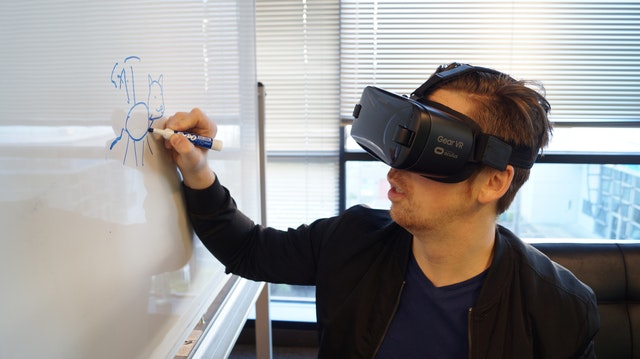In preparation for a new project using augmented reality, I stumbled across an absolutely must-read article in Harvard Business Manager from February this year. In their article, the authors Michael E. Porter and James E. Heppelmann describe augmented reality as a new interface between humans and machines that will bridge the gap between the digital and the physical world. Among other things, it states: “Augmented reality will reach companies in all industries and many other organizations, from universities to social enterprises. It will fundamentally change the way we learn, make decisions and interact with our physical environment. And it will change how companies serve their customers, train employees, design and produce products, manage their value chains and ultimately also define their competitive position.” Anyone who deals with the topic, for whatever reason, will warmly appreciate the article placed. The 6 euros due for the download are definitely well spent. Profound insights are guaranteed.
After visualization technologies such as 3D, virtual reality (VR) and augmented reality (AR) have come back into focus in recent years, an inventory is certainly appropriate. However, the question of "Where do we stand?" cannot be answered conclusively. The fact is: the wait for the breakthrough of VR is apparently over. Both the number of devices sold and the commercial success of entertainment products in VR are lagging behind the forecasts. Even today, VR is not a mass medium, and expectations in this regard have clouded over significantly in recent months. The same applies to 3D at home and in the cinema. Both technologies have supplemented the media canon, but by no means fundamentally reorganized it. Even with the use of new technologies, 3D and VR remain niche phenomena. There is little to suggest that this will change in the medium to long term.
The question of the further success of augmented reality is open. Experts and market researchers are predicting a considerable upswing for the previously unrecognized "little sister" of VR. Google's tech boss Ray Kurzweil even believes: "We will get used to being in augmented reality throughout". Hampleton Partners expect a global market volume of $2022 billion for AR by 161. That means an average growth rate (CAGR) of 85,4 percent. Another proof is the report of the Venture Reality Fund. He notes that on a global scale, the number of AR companies has grown by a whopping 50 percent in the past six months.
The raw numbers of the analysts confirm: the highly praised virtual reality cannot keep up with it, here "only" a market volume of 17 billion dollars and a CAGR of 8 percent are announced.
The topic of AR is also on the rise in German industry. In a study by the Federal Association of the Digital Economy (BVDW), 49 percent of those surveyed confirmed that augmented reality has greater potential for their business than VR. Every third company also states that they intend to use such applications in the future.
Experts and studies agree on one thing. The forecast growth is almost exclusively due to the use of AR in industry and B2B. The relevant publications report on applications in mechanical engineering, architecture, construction, trade and medicine. AR is used in development, production, logistics, marketing & sales.
Not to forget the entire education sector. Industry 4.0 means digitized, networked production and requires new skills from employees. Keywords here are lifelong learning, learning “on the job” or “on demand”. AR is particularly suitable for these industrial learning environments.
In this context, the automotive industry can certainly be described as a pioneer. AR applications are increasingly being used not only in planning or production, but also in the fields of education and training. Which makes sense, because augmented reality technologies enable information to be gathered quickly and can make hidden information and data streams visible.
With Wegesrand and our participation in IJsfontein, we can see this development on a daily basis. For Mercedes-Benz, we not only trained more than 10.000 participants from the sales and partner organization on their systems and technologies via mixed reality solutions during the market launch of the new A-Class. The project is currently on a world tour through the entire sales organization, the results and response are outstanding. Augmented Education ensures an immersive and therefore more in-depth teaching and learning experience. In this way, Industry 4.0 and Education 4.0 grow together.
From the point of view of the Porter and Heppelmann mentioned at the beginning, instruction, training and coaching are one of the core functional areas in which AR can create added value. In addition to the technological aspects, the authors focus on other central questions in their paper: How is the topic integrated into the corporate strategy, where do the know-how and the specialists come from, how is the content produced...?
Questions that we as a network of experts ask ourselves every day and that significantly influence the way we work.
Together with Walter Bauch from Mercedes-Benz Global Training, I will report on our A-Class project at Daimler as part of the StartupCon in Cologne's Lanxess arena and also outline the current development of the AR/VR market. Maybe we'll see each other there.
(Photo: Eugene Capon, Pexels)
